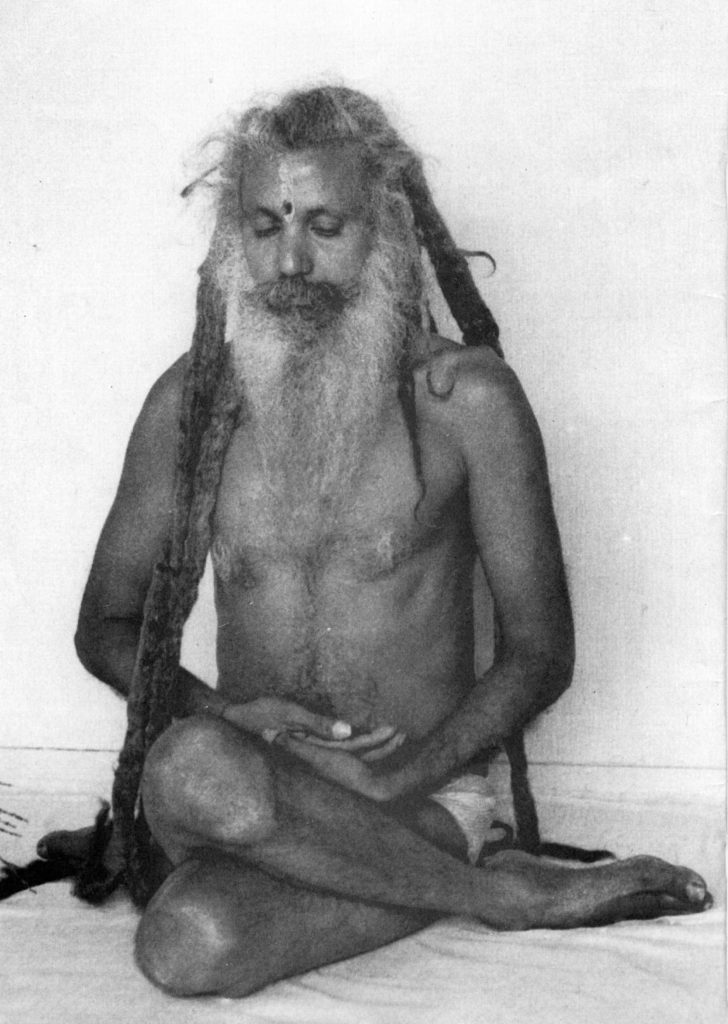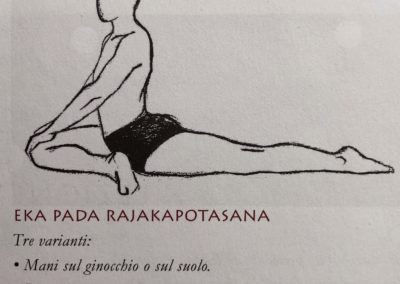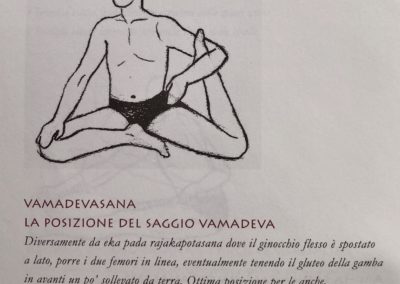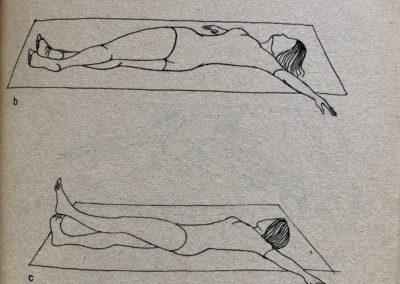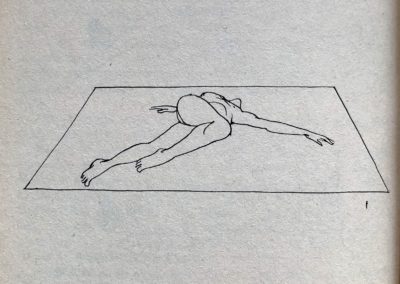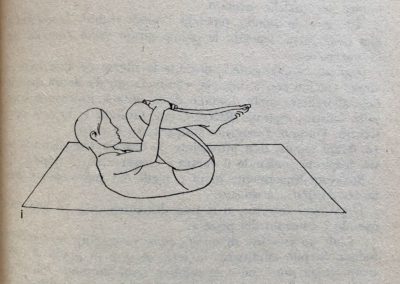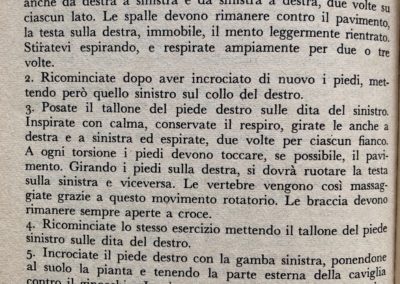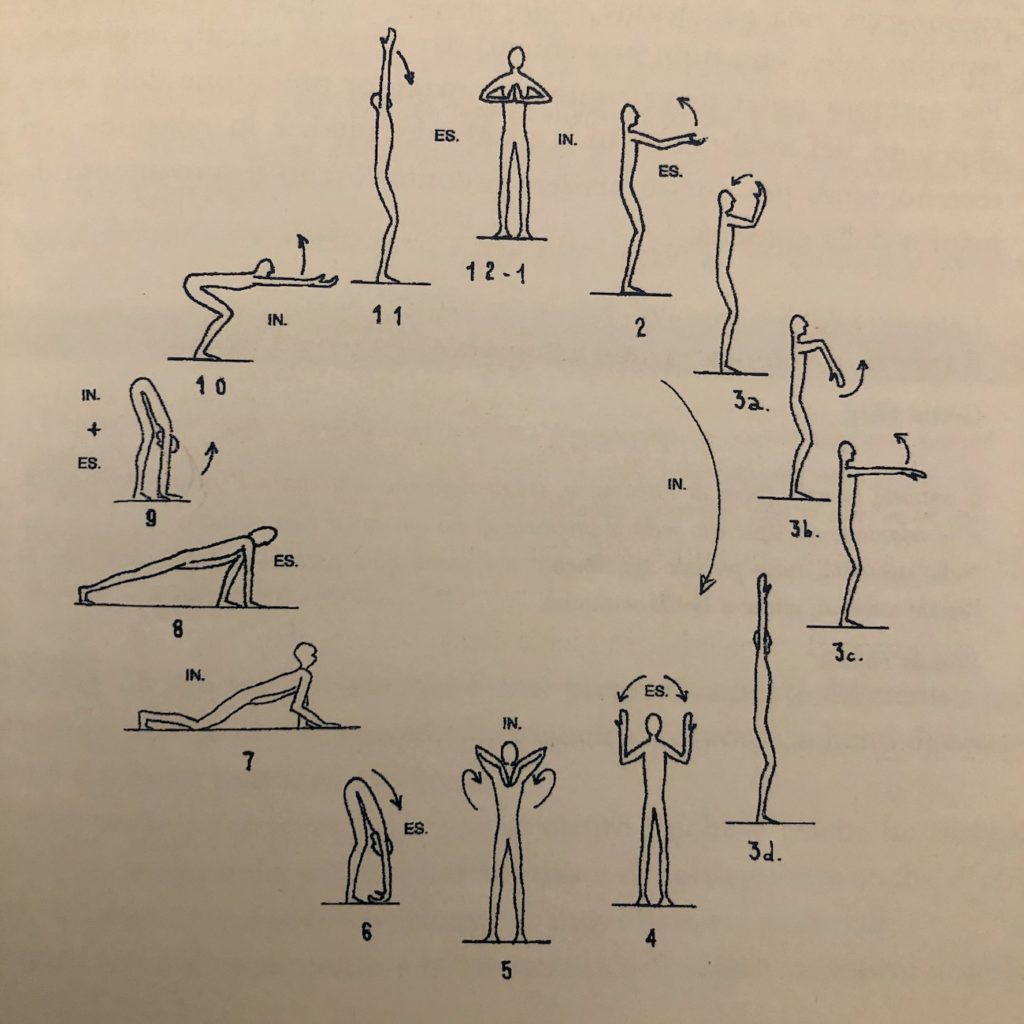THOUGHTS
Silence is not just keeping quiet
Silence is not just keeping quiet
but it is your inner peace
and it is in everyday things:
in the run of a child,
in the flight of birds,
in the rain and snow
that falls free and settles gently
like a dancer in her show.
This is silence, that you can't see,
but keep it yes.
And you just have to find it
why silence
it is you.
Do it, 11 years, Peruvian
in Candiani Chandra Livia, But where are the words, Effigy editions, 2015.
The position remains the unknown
The position remains the unknown that you approach without preconceptions. A little’ like a dark room in which you slowly open a window: the light progressively illuminates the space. The substance always remains in awakening, without the slightest change during the taking, maintenance and return to asana.
Éric Baret, The Tantric Yoga of Kaśmīr
Practice and lighting are one
Practice and lighting are one. And because the practice has its roots in enlightenment, even the beginner's practice has the fullness of enlightenment, because it is in him from the beginning. For this, in giving instructions on how to practice, [the Zen master] warns the disciple of do not seek enlightenment beyond practice, But say focus only on practice, without aiming for anything else, because this form of meditation coincides with the awakening of his mind.
And since it is precisely illumination of practice, there is no end to enlightenment; and since it is practice of realization, there is no beginning to practice.
Dōgen, Shōbōgenzō
We thank Silvia Patrizio for this contribution that she brought to within darśana – Yoga through the eyes of the texts.
When you are in crisis, close up a bovine!
Continue sharing practices that, in our opinion, they can be useful in this suspended period that sees many and many of us more static than usual. We asked for help from the mythological figure of pulley, then to that of king pigeon… and today we rely on the millennial wisdom of cattle: if there is, In fact, one thing we learned in India is “when you are in crisis, close up a bovine”!
Gomukāsn
The posture of the cow's face
“Sitting with your bust still, bring your feet flat on the ground to the sides of your back. This is the gomukha posture, which looks like a cow's muzzle. " GS: 2.16
"The Haṭhayoga-pradīpikā (I.20) states that the legs must be crossed in order to bring the right ankle against the left hip, and viceversa." [1]
This is a position that may not be accessible to everyone on the first try, but which can also be practiced with adaptations and in a partial way.
There are several ways to access it
From a sitting position with bent knees:
- sit on the ground with your knees flexed and the soles of your feet resting on the ground and separated more than the width of your hips;
- at this point pass a foot, imagine right, below the left knee to bring it to rest the heel outside the left gluteus;
- at this point do the same thing with your left foot, passing it over the right knee to bring the heel to the outside of the right buttock. [2]
- The final position will see us sitting with the buttocks on the ground in the space of the feet, the heels resting on the outside of the buttocks and the toes facing outwards to remind the ears of the cow.
From the sitting position with the legs stretched out:
We often use this mode when we approach gomukhāsana during the warm-up of the legs at the beginning of the lesson, inspired by the sequence of “pawanmuktasana 1 – antirheumatic group " [3]: this will start with the leg that passes over, aligning the two knees and bringing the heel outside the gluteus.
We can get there either from a static sitting position, both from the movement that we call "cradle" where a flexed leg is kept "like a baby" and swung on the frontal plane, first in a gentle way, then more vigorous towards the outside, to then be brought to the closure, placing the knee on that of the outstretched leg and the foot outside the buttock.
In this way the position also lends itself to be performed in partial form, that is, keeping the leg under extended, especially if the goal is to start working on this gesture of squeezing the pelvis.
From this half position it will be possible to switch to the complete position by slightly lifting the still free gluteus and flexing the stretched leg, bring the heel to the outside of the buttock.
Another way, useful for those with thick or stiff legs, could be to get into gomukhāsana from the quadrupedic position that we call "the cat": in this case you can bring one knee behind the other, keeping your feet well apart, and, with the help of your hands, bring the pelvis to the ground in the space between the feet.
Useful at this point press with both hands on the soles of the feet and lift the pelvis for some anterior movement – retro version and some lateral movement that we call "duck": in practice a swing to the right and left keeping the pelvis as soft as possible.
Whatever the gateway for gomukhāsana the challenge is to be able to stay in the ease: in case of inconvenience or fatigue, in addition to the possibility of practicing it partially, it may be useful to add a rise under the pelvis that allows a higher and more agile seat and less request for the knees.
The position lends itself to being kept static, with your hands on the soles of your feet or overlapping above the knee.
Not surprisingly in the tradition Satyananda, with different name, the position is indicated in the group of asana meditative as a valid alternative to other sitting positions, it is considered very beneficial due to the unusual position of the knees and which “affects the pelvic structure and lengthens the external muscles of the thighs instead of the internal ones […] and also massages and tones the pelvic and reproductive organs. " [4]
The position is often proposed with a variant of the arms that, somehow, completes the work in progress on the lower limbs.
However we like to propose it more in the form of kriya as it was sent to us by Walter Thirak Ruta according to the teachings received from Swamiji.
In this case it is a question of realizing the static position first with the upper body and then in flexion, bringing the least of the hands placed on the knee, staying in both positions for some time. The same gestures will be repeated with a different attitude of the arms (arms open laterally, arms stretched over the head with praying hands in rotation, praying hands behind your back ...) always keeping the static position first with the upper body straight and then in flexion, taking care not to lift the buttocks off the ground and not "spread" on the thighs-knees, but always keeping the back active and stretched and not indulging in moving work elsewhere. [5]
The position lends itself, Moreover, to perform column twists, to be made on both sides for each leg crossing.
Like all seated positions, the effect produced by the rooting of the pelvis on the ground, in this case also firmly squeezed, is to favor the thoracic opening and the lengthening of the spine, facilitated by the light traction that can be exercised by the intertwined hands on the knees.
What, in our opinion, this position gives, in such a static moment as what we are experiencing, it is a transformation of the lower back area, very deprived of the long hours spent sitting, as well as a prodigious squeezing of the legs, overcoming cramps and fighting the widespread phenomenon of "restless legs", as well as the aforementioned lengthening of the outer bands of the legs, connected with the MTC meridian of the biliary vesicle, very active right now (see in this regard the article dedicated to Spring according to TCM).
We like it because it brings peace, a profound peace as well as the breath that derives from it.
_______________________
[1] Stefano moats (edited by), Gheraṇḍa-Samhita (Teachings on Yoga), Magnanelli, Torino, 1994, p.49.
[2] note that from here, leaving the left foot resting on the ground near the right knee, we could go directly into a variant of Matsyendrāsana.
[3] Swami Satyananda Saraswati, Asana Pranayama Mudra e Bandha, tr. it. Satyananda Yoga School Edizioni Satyanananda Ashram Italy, Rimini, 2011, pp. 21-42.
[4] therein, p. 101
[5] For further information: Walter Thirak Ruta, God is happiness, Pramiti Editions, 2011, pp. 197-199
Like a pigeon sitting on a branch…
Among the practices that come to our aid in this period of partial immobility, there is that of the royal pigeon, in the simplified variant, with the leg remaining elongated.
Eka Pada Rājakapotāsana
“It deserves to be included in the daily series of asanas, because it helps to straighten curved backs and free the hip joint, so threatened by our way of life.”
Andre Van Lysebeth [1]
Eka Pada Rajakapotasana can be easily inserted in the dynamic heating before being practiced in static form. The way we like to propose, heating in some’ “intense” It is in the transition between the dog that looks down and lunge.
Manu usually offers as well:
- the position of the dog that looks down to bring one foot in his hands, imagine right; at that point we will have the right foot next to the right hand and, the other side of the left hand. The left leg can rest the knee.
- From here, far “migrate” the right foot towards the left hand, facilitating the descent of the right knee towards the right hand; of course, the basin will remain very relieved given the highly angled position of the right knee, variant that helps not only the hip joint but also a work on the rear of the leg and on the corresponding buttock.
- From there, slowly increase the bending right knee to gradually move the foot toward your pelvis: each may decide to which closure requires, both for the type of work sought is based on your ability. What will change, and that should be considered, It will be the positioning of the right thigh with respect to the pelvis (more displaced outwards or rather perpendicular interrogating more balance).
- The hands will be active and will support your upper body while your back leg, stretched and taut, with the sole of the foot facing upwards and not to the side – as accurately indicates Van Lysebeth in its description – continues its work of “to slide” back aided by the weight of the body, partly supported by the hands-arms, to go to gently accompany the pelvis to the ground.
What you can do, At first, It is to pass in a dynamic way by the sinking dog doing then migrate the foot towards the opposite hand, then return, repeating with the other leg and maybe spacing out this step with other āsanas useful in this small Vinyasa, like the bench-sentinel or the transition to a three-legged dog with the opening of the left (lifting one foot to the sky by the dog looking down, and making “fall” the knee-leg on the opposite side – what Manu, with the children but now also with adults, who loves “the dog peeing”… clear, no?).
When you are ready you can think of to try to inhabit the static position.
- Picking up where we had arrived can be useful, if not necessary, Shim the basin so you can experience the “thrust” Ground relaunched from sliding leg back. Initially for people like Manu has a very stiff back, It will be unthinkable to realize the position in its dorsal extension, possibly freeing the hands as support.
But the question is always: what we want to work?
We meet the difficulty in small doses.
If the first problem are the legs or, However, It is on “jetl was” the legs that we want to work, We can keep your hands on the ground and focus on the action of the rear leg; keep breathing and, gradually, move the support of the hands on the knees in front: that in itself it becomes more richiestivo for the back as it increases the dorsal extension, as well as more challenger balance.
However even the hands placed on the ground can be very useful to give a direction to the back: maintaining the neighboring and lower blades and playing a little bit on the slight bending of the elbows and then lay them again, we feel retropulsion and the resulting "explosion" of the chest forward, as the real pigeon position requires.
What hands are on the ground or on the knee, at that point it might be useful to achieve a more simple variant, ie the forward bending, where the torso “spreads” Thigh-shin (depending on how the leg is positioned in front of) and arms that glide back to the ground. You'll find you can do it all!
From interesting here also move with the torso in the inner space to the knee flexed, ie in our case on the left: Another interesting movement. Returning then to reposition the center and use your hands firmly to lift your torso, or better: to extend! You will feel a big difference!
From here there are many possible other variations:
- gradually try to raise a hand at a time to increase the pressure of the ground area;
- bring the two arms outstretched to the side, with palms facing forward, maintaining the shoulder blades together and lowered so as to advance the chest;
- raise your arms to the sky holding her hands in prayer, increasing the dorsal buckle;
- finally you can join your arms extended in front of the chest with his hands in prayer without bending your torso: Hence the difficulty of the lift arms is amplified by the instability of the base and therefore the need for continuous adjustments (move your hips to the ground, keep the back extensors and the open chest with arms raised forward).
The practice of these variants allows a tension release at the level of the legs also given the increased blood inflow in the pelvis area, in addition to the benefits at the level of back injury if already appointed. Our Albiji is usually propose these variants!
Another possibility is to try to do the pose “full” that would provide for the flexing of the rear knee to bring, with time and with the help of hands, his foot to touch the head, with the back arched to meet him.
This variant is definitely not suitable for everyone and could be interesting, with time, work to be able to grasp the foot behind, flexing the knee, for a more intense work-ileum psoas level (hold it in your hands or catch him in the elbow); then you could go in the direction of the call Vāmadevāsana variant which requires that the rear foot is in ports “to touch” the foot of the front leg, taking care to keep the front thigh-femur exactly perpendicular to the dock.
B.K.S. Iyengar describes it well in his text [2].
In addition to the benefits already mentioned by Van Lysebeh, B.K.S. Iyengar sostiene:
“These rejuvenated positions the lumbar and dorsal regions of the vertebrate column. They exercise the muscles of the neck and shoulders; the various movements of the legs strengthen the thighs and ankles. The increase it blood circulation in thyroid, in parathyroid, in the adrenal glands and gonads increases vitality. Moreover, these positions stimulate circulation around the pubic region healthy keeping. These asanas are recommended for treating disorders of the urinary system and to control the sex drive.[3]”
Adding to Vāmadevāsana:
“This asana relieves pain, care stiffness in the legs and maintains healthy genitals. It also tones the spine and improves digestion.[4]”
For clarification on the proposed sequence, albeit with some differences, point This link
After having practiced both dynamically and as a static position, It could be useful to take some steps in Vinyasa already described and then continue with one of the other positions:
Bhujaṅgāsana, Cobra
Gomukāsn, the position of the muzzle of the cow.
Whichever you choose?
________________________
[1] From Lysebeth Denise e Andre, My Yoga Exercises, Mursia Publisher, 1980, p. 147
[2] B.K.S. Iyengar, Theory and practice of Yoga, Ohara, 2003, pp. 305-307
[3] ibid, pp. 339-345
[4] ibid. p. 307
[5] pictures from Walter Thirak Ruta, God is Happiness, Editions Pramiti, 2011, pp. 194-196
The experience and the Master
Experience is the teacher, Guru a reminder.
Sri Sri Sri Satchidananda Yogi, from notes by Ruth Huber
The best thing to do this morning
The best thing to do this morning
to lift the world and my species
It is to stand on the step in the sun
with the cat in her arms to purr.
Litter purr
for the valley fields
the hill, to the peaks of the constellations
to the most distant worlds. Purr
with her – my queen.
Learning that mantra which contains
the ancient musical vibration
perhaps the first, when from the dark motionless
to overflowing happiness
He triggered a revenue creation.
Mariangela Gualtieri, Young words, Einaudi Editore, Torino, 2015
And how does the crocodile?
Kriya PULLEY
Among the practices that usually offer in the spring there is that (worshiped!) dei Makara kriyā, a series of repeated twists performed ground.
It is a practice that the Master often suggested before the Sun Greetings, as a sort of preparation, yoga Vyayama, or as real Yoga Sadhana, with numerous variations and repetitions.
We like to practice it and offer it both ways, and we believe it is one of the best "gifts" received from Samiji because simple, safety, suitable for all levels and that requires a good presence but induces the same type of calm that brings the repetition of a mantra.
Here we propose some variant, found on the book "Yoga for Everybody" by Philippe de Meric* that chapter 23 It proposes it as "A 'flash' series for tired people".
“[…] we will propose a series quieter and much less known, which also deserves to be better known for several reasons.
These exercises, which cause a sort of friction of the spine, activate the general blood circulation, gently massaging the vertebrae and promote digestion. Apparently there is no contraindication against them, because they do not require painful efforts it special athletic qualities.
Their name is derived from the mimicry, which roughly reproduces the "movements of the crocodile emerging from the mud after his meal '. Although there are doubts about this analogy, this does not detract from the interest for the year. "
Their peculiarity is to be carried out by lying (usually back on the ground but also on their stomachs ...) maintaining the column in elongation and open arms cross or a little lower, keeping your shoulders as a fixed point: It will dock, In fact, the fulcrum of rotation, rotation that intesificherà more engaging shoulders, Hand hand that variants shorten the lever of the legs (from the legs stretched out to the legs flexed, for example,).
The head can rotate, if free, or stay fixed with his eyes to the ceiling trying to keep the neck stretched and relaxed even when their backs were stiff and stressed by the rotation of the pelvis: in that case it must be the right availability and fluidity to let them rise up, it serves, continuing dynamically rotations and only after many repetitions try to remain in the static, with the help of the hand to the ground (the side of the rotation) for "invite" the opposite shoulder to seek the soil; in case of stiffness of the back and the consequent "great lifting" of the opposite shoulder, with the risk of "push" the hand-forearm to the ground with the consequent risk of staking so the shoulder upwards (the opposite of the working direction), It might be useful to try to reduce the lever arm, bending at the elbow with the hand towards the head or with any other variant that does not stiffen, but let to stay in comfort and breathe.
Recommended many repetitions for dynamic variation, you can perform a deep breath: inspiro – I hold – It rotates on one side- return to center – espiro, and repeat on the other side and continuous.
After that you feel you have "sold out" the search for that variant, moves to the next. Depending on the time and needs you can select the most useful variants.
Earnings may start with some lateral extension "download" from the ground, such as those de Meric proposes closing, and start with a few variations legs stretched out before moving on to other more "short" to engage more shoulders but allow to remain in the static.
At the end you can re-run isometric stretches and stay some time savasana or go to the ground belly variants makarāsana
"This set of exercises is often considered by master yogis as a preparation for a session of complete positions.
For us it is a starter, chosen from among numerous other, which it has the merit of being available to everyone as it requires very little time.
Guests can exercise in the morning or in the evening before going to bed, to prepare you for sleep, unless you want to perform these exercises between two of the series that you will find in this book. "
For us it is the typical practice “for all seasons” and who also want to practice at home, being guided by the innate knowledge of the body, our great Master.
____________________
*Philippe Meric, Yoga for all, Garzanti Publisher, 1971, pp. 235-241
And what do you see?
M. […] The fact that you do not look carefully enough. Look closely and you'll see what I see.
V. And what do you see?
M. I see what you see you too, here and now, if not concentrassi your attention in the wrong direction. You do not pay attention to yourself. Your mind is always with objects, people and ideas, and never with yourself. Put yourself in the spotlight, become aware of your existence. Watch how it works, points out the reasons and the results of your actions. Examine the prison you have built around tea, inadvertently. By knowing what you are not, you get to learn about tea itself. The way back to tea itself passes through the rejection and denial. One thing is certain: the real is not imaginary, It is not a product of the mind. Even the feeling of '”I am” It is not continuous, although it is a useful indicator: shows where to look, but not what to look for. Watch it carefully. As soon as you are convinced that the only real thing that you can say tea is “I am”, and that you can not be nothing that you can tell, the need of '”I am” vanishes accanisci more to look for a verbal explanation of who you are. You only need to get rid of the tendency to define yourself. Each definition refers only to your body and its expression. When it disappears obsession body, will you turn spontaneously and effortlessly to your natural state. The only difference between us is that I am aware of my natural state, while you're confused. As gold processed and turned into jewelry is not the most valuable gold dust, if not for the value that gives him the mind, so we are one in essence and different only appearance m. We discover if we are serious, we discover looking, investigating, asking ourselves every day, at any hour of the day, dedicating his life to this discovery.
Sri Nisargadatta Maharaj, I'm the one, Ubaldini Publisher, Rome, 2001, p.10
The small sun salutation
“Retracing the gestures do not mean to repeat. When what matters is learning, there is no repetition: Rather, deepens understanding through subsequent steps. Without this recurrence of the gesture, this ripercorrerlo, do not learn. It is also clear that to learn it takes vigilance, opening, sensibility. The repeated recourse to customs, The no trace.”
Renata Angelini and Moiz Palaci [*]
Among the sequences that we like to propose we find that call “The small Sun Salutation”.
We think it can be particularly suitable also in this moment of “reduced mobility” because it is a simple sequence where movement and breath are coordinated, suitable for anyone since it does not require large joint movements or special efforts: It takes place on two feet and, if possible, we can add some variants in the lunge that, however, they are negligible if this movement is not agile and / or would not lead to a comfortable posture. For this reason, we suggested it inside the small bag for the practice we called “A guide to the positions for the 40ena“.
The practice of Sun salutation it is widespread among different traditions and lineages and each maintains its own peculiarities; we had the opportunity to experiment with this sequence with Walter Thirak Ruta during the formative years, just as equally significant and interesting alternative to the more “classics” sun salutations, and we find it explained in detail in the article edited by Moiz Palaci and Renata Angelini “Yoga paths”, one of the publications YANI (Association Country Insengnati Yoga).
It is a basic sequence 12 gestures, performed with great presence and accompanied by breathing: Walter suggested to perform the gestures so “theatrical”, intending to put an emphasis on gestures for “direct them” better from an energy point of view.
Angelini and Palaci indicate the importance of breathing regularly, able to decrease that form of urgency that often accompanies us and leads us to “run away” by location, and the ability to “maintain a constant relationship with the support base during the concatenation of movements”.
It lends itself to be practiced accompanied by Sūrya Mantra, the song of the 12 of the names of the sun, in this way the gestures can take on a greater ritual and symbolic value, which will be exemplified in gestures: I exhale I offer, I inhale I take and I bring to me and up, I exhale and dive…
In this way, not only will the gestures assume the right theatricality of the rite, but it will allow the sequence to be more easily memorized, in addition to becoming a play tool with boys and girls, who really like this practice.
Generally it is a practice that gives a lot of peace, able to warm the body completely without stressing the joints too much.
It is also possible to practice it while sitting with a few simple adaptations, making it equally effective.
The detail to take care of, whatever the version practiced, is the perception of a stable base of support, from which we start with the inspiration and to which we return with the exhale, transformed by travel.
Then yes that this gesture of prostration and gratitude that we turn to the sun will be our true “revolution motion”.
_____________________
[*] Renata Angelini, Moiz Palaci, A consciousness capable of welcoming movement and not movement, in Yoga Paths n.38, YANI, Milan, 2006

